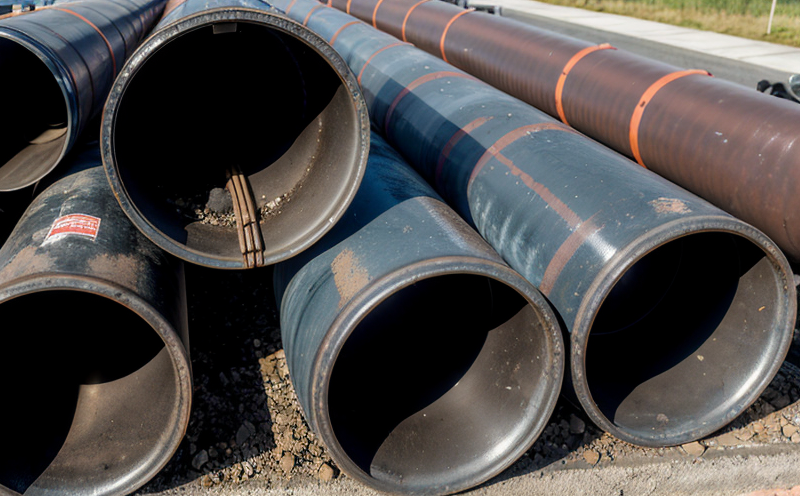IEC 62321 Testing of Hazardous Substances in Plastic Hoses
The IEC 62321 standard is a pivotal tool in ensuring that plastic hoses, especially those used in hazardous environments or intended for contact with food and beverages, are free from harmful substances. This standard is particularly critical for industries such as automotive, medical devices, and water and wastewater management.
IEC 62321 addresses the issue of potential leachables and migrands from plastic materials into the environment or products they come into contact with. These substances can be hazardous to human health and the environment. Compliance with this standard not only ensures product safety but also enhances consumer confidence, regulatory compliance, and market access.
The testing process under IEC 62321 involves several key steps: sample preparation, extraction of potential leachables using specific solvents, and analysis by various analytical techniques such as gas chromatography-mass spectrometry (GC-MS) or high-performance liquid chromatography (HPLC). The standard specifies the limit values for a wide range of hazardous substances, including heavy metals, phthalates, and other potentially harmful compounds.
For quality managers and compliance officers, ensuring that plastic hoses meet IEC 62321 requirements is crucial. This involves not only understanding the standards but also having the right laboratory equipment to perform the necessary tests accurately. For R&D engineers and procurement teams, this standard provides a roadmap for material selection and supplier evaluation.
The testing process can be complex due to the variety of plastic materials used in hoses. It is essential to have expertise in polymer science and analytical chemistry to interpret results correctly and make informed decisions about product design and production processes.
Compliance with IEC 62321 also brings significant benefits beyond regulatory requirements. By adhering to this standard, manufacturers can demonstrate their commitment to quality and safety, which is increasingly important in a competitive market. It helps build trust with customers and stakeholders, ensuring that products meet the highest standards of integrity and reliability.
In conclusion, IEC 62321 testing of hazardous substances in plastic hoses is not just about meeting regulatory requirements; it's about safeguarding public health and environmental sustainability. This standard plays a vital role in ensuring that plastic hoses are safe for use across various industries.
Why It Matters
The importance of IEC 62321 testing cannot be overstated, especially when it comes to products like plastic hoses. These hoses are used in a wide range of applications, from medical equipment to household appliances and industrial machinery.
One critical aspect is the potential for hazardous substances to leach into food or water, posing serious health risks. For instance, phthalates, often used as plasticizers, have been linked to various adverse effects on human health, including reproductive issues and developmental disorders. Ensuring that these substances do not migrate from hoses into contact with consumables is paramount.
Another significant concern is the environmental impact of hazardous substances. Many plastic hoses are discarded after use, and if they contain harmful compounds, this can lead to contamination of soil, water bodies, and ecosystems. By adhering to IEC 62321 standards, manufacturers can minimize these risks, contributing to a more sustainable future.
From an industry perspective, compliance with IEC 62321 is essential for maintaining market access and reputation. Non-compliance can result in product recalls, legal actions, and damage to brand image. Moreover, it ensures that products meet the expectations of regulatory bodies and consumer demands for safety and quality.
In summary, the importance of IEC 62321 testing lies in its ability to protect human health, ensure environmental sustainability, and maintain market integrity. It is a crucial step towards producing safe and reliable plastic hoses that can be trusted across various applications.
Applied Standards
| Standard | Description | Scope |
|---|---|---|
| IEC 62321-1:2018 | General requirements for the testing of plastic hoses | Establishes the general principles and methods for conducting tests on plastic hoses. |
| IEC 62321-2:2019 | Specific requirements for the extraction of hazardous substances | Details the procedures for extracting potential leachables from plastic hoses using various solvents. |
| IEC 62321-3:2020 | Analysis methods and limits for hazardous substances | Defines the analytical techniques and limit values for a wide range of hazardous substances in plastic hoses. |
The application of these standards ensures that testing is consistent, reliable, and meets international quality benchmarks. Compliance with IEC 62321 not only guarantees product safety but also facilitates trade across borders by meeting global regulatory requirements.
International Acceptance and Recognition
The acceptance of IEC standards, including IEC 62321, is widespread among countries that prioritize product safety and environmental protection. These standards are recognized in numerous international jurisdictions, ensuring harmonization and consistency in testing protocols.
Countries like the United States, Canada, Europe, and China have adopted various aspects of IEC 62321 to regulate plastic hoses used in medical devices, food packaging, and industrial applications. This international recognition enhances market access for manufacturers who comply with these standards, as it simplifies regulatory compliance across borders.
For industries that rely heavily on plastic hoses, such as the automotive and healthcare sectors, adherence to IEC 62321 is not just a recommendation but often a mandatory requirement. This standard ensures that products meet stringent safety and quality benchmarks, thereby fostering trust among consumers and stakeholders.
In conclusion, the international acceptance of IEC 62321 underscores its importance in ensuring product safety and environmental responsibility on a global scale. Compliance with these standards not only meets regulatory requirements but also enhances market reputation and consumer confidence.





